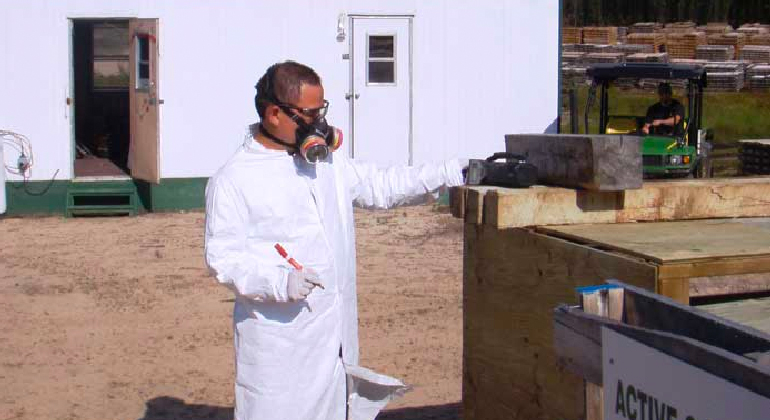Denison Mines (TSX: DML; NYSE: DNN) says it has received positive test results from its in-situ uranium recovery process at the Wheeler River project in northern Saskatchewan’s Athabasca basin, which it called ‘historic.’
The successful test marks one of the first uses in the high-grade basin of the in-situ (ISR) leaching method that separates uranium from ore underground and pumps the solution to the surface for extraction. It is generally less expensive than traditional hard rock mining.
“The recovery of uranium bearing solution at targeted rates and grades is history in the making,” Kevin Himbeault, Denison’s vice-president of plant operations, said in a press release on Monday. “Initial analysis indicates the hydrogeological system has responded as expected with pH trends, flow characteristics and uranium recovery meeting expectations.”
Mining and investment companies are jockeying for acquisitions in the nuclear industry and to develop the Athabasca basin, one of the premier uranium zones in North America, as a confluence of climate change concerns, green power demands and Russian aggression affecting fossil fuel prices widens the appeal of nuclear energy.
Uranium Energy Corp. (NYSE: UEC) has spent US$570 million acquiring projects in the past year — including outbidding Denison for UEX in August — while Brookfield Renewable Partners and Cameco (TSX: CCO; NYSE: CCJ) bought Westinghouse’s reactor-building unit last week for US$7.9 billion.
“Denison continues to de-risk its Wheeler River project,” BMO Capital Markets wrote in a note on Monday, noting the Phoenix test “could be the first of its kind using ISR in the Athabasca basin” and “the initial results appear promising.”
Solution samples recovered from about 400 metres below the surface during the feasibility field test started last month have been sent for lab assays and analysis, Denison said. Preliminary results show successful acidification and recovery of uranium through the ISR method, it said.
Dension said it’s completed the test’s first phase of leaching and plans to complete the second phase of neutralization before the end of the year. The test’s final phase, involving the management of the recovered solution, is to start next spring.
Wheeler River, in the eastern part of the Athabasca basin, has combined indicated mineral resources of 132.1 million lb. uranium oxide in 1.8 million tonnes grading 3.3% uranium oxide.
A 2018 prefeasibility study looked at developing the project’s Phoenix deposit with ISR and its Gryphon deposit as a conventional underground mine. Together, production from the deposits could be 109.4 million lb. uranium oxide over a 14-year mine life, with a pre-tax net present value of $1.3 billion at an 8% discount rate. Preproduction capital costs are estimated at $322.5 million. Denison estimates the Phoenix ISR operation to have a pre-tax net present value of $930.4 million at an 8% discount rate with average operating costs of US$3.33 per lb. uranium oxide.
“The successful recovery of uranium-bearing solution from Denison’s high-grade Phoenix deposit is a historic moment for uranium mining in Canada,” Denison president and chief executive officer David Cates said in the release. “Denison has truly showcased its industry leadership in bringing the low-cost ISR mining method to the high-grade uranium deposits of the Athabasca basin.”
Denison’s other Athabasca projects include a 23% stake in the McClean Lake joint venture, which includes several uranium deposits and the McClean Lake uranium mill, a 25% interest in the Midwest Main and Midwest A deposits, and a 67% interest in the Tthe Heldeth Túé and Huskie deposits on the Waterbury Lake property.




Leave it where it is.